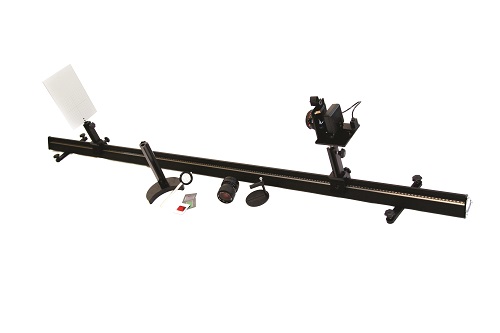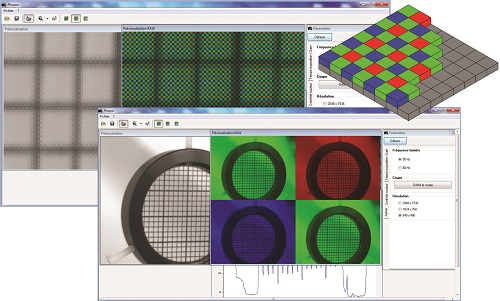Camera model : EXP200150
Référence : EXP 200 150

The didactic digital camera model is an excellent tool for understanding how a camera works. The lenses, with fixed and variable focal lengths, are used to implement the diaphragm to allow depth of field and understanding of the optical zoom notion, while the software studies the digital zoom, the white balance setting, as well as the Bayer filter. Usable on a bench with a 10mm rod or on a camera stand, the model has a reflex viewer where each item is visible and identifiable. Its comprehensive user manual will provide you with all the information you need to use your camera in your hands-on exercises and end of year projects.
BAYER FILTER
A Bayer matrix, also known as a Bayer filter or a Bayer mosaic, is a type of Color Array, i.e. a matrix of coloured filters placed in front of the digital sensor to record photographs in colour. This matrix consists of 50% green filters, 25% red filters and 25% blue filters. A useful camera pixel is thus in reality a composition of 4 pixels. The “Photoo” software, supplied with the camera model, highlights this filter and helps students understand how colour functions on the sensor.
OPTICAL ZOOM - DIGITAL ZOOM
An optical zoom is possible with a variable focal length lens. A ring moving several groups of ocular lenses within the lens,
is used to modify continuously the resulting focal distance and thus the magnification, thus modifying the angle of view
covered by the lens and the size of the image elements. A “digital zoom”, made possible by the Photoo software, simulates a change in focal distance by image resizing techniques. A word of warning however : an overly large
digital zoom shows the shape of the pixels. You can observe this with the software by zooming up to 32 times.
DEPTH OF FIELD
For a given use and setting of a camera, depth of field corresponds to the zone of the space in which the subject to be photographed must be placed in order to obtain an image that the eye (or sensor) will accept as sharp. The size of this zone depends on the shot parameters, and, in particular, the focus distance, diaphragm opening, and sensitive surface dimensions. The larger the depth of field, the more it includes the subject in its environment. On the other hand, the smaller the depth of field, the more it isolates the subject. Using the camera model, you can easily implement all these parameters on a limited area (simulated macro), for example with a small figurine.
SUBJECTS APPROACHED
»»Reflex viewer study
»»Aperture, exposure, focusing
»»Depth of field
»»Bayer filter
»»White balance setting
»»Optical zoom – Digital zoom
»»Studying a digital image, compression
»»RAW file
»»Studying photographic lenses
NECSSARY EQUIPMENT
| Reference | Description | quantity | | POF010810 | Pedagogical Model of a digital camera | 1 | | POF010110 | Prismatic optical bench, 2 m | 1 | | POF010124 | Optical rider | 2 | | POD010110 | Basic component holder | 1 | | POD069140 | Lantern with dimmer | 1 | | POD002192 | Half-moon stand | 1 | | POD066500 | 40-mm diam. millimétric token | 1 | | POD060260 | Prism holder | 1 | | POD010002 | Millimetric metal screen | 1 | | POD061932 | Dichroïc filter, red | 1 | | POD061933 | Dichroïc filter, green | 1 | | POD061934 | Dichroïc filter, blue | 1 |
Computer is required |
|



